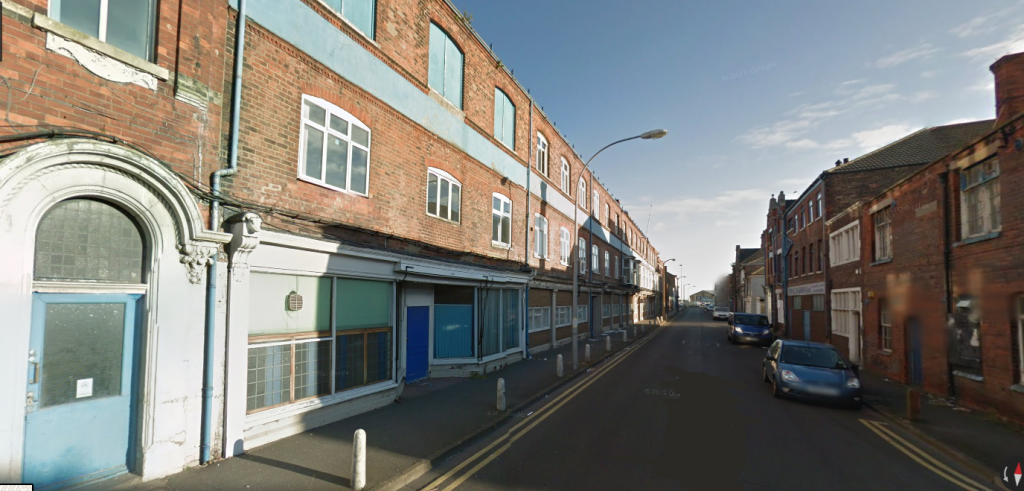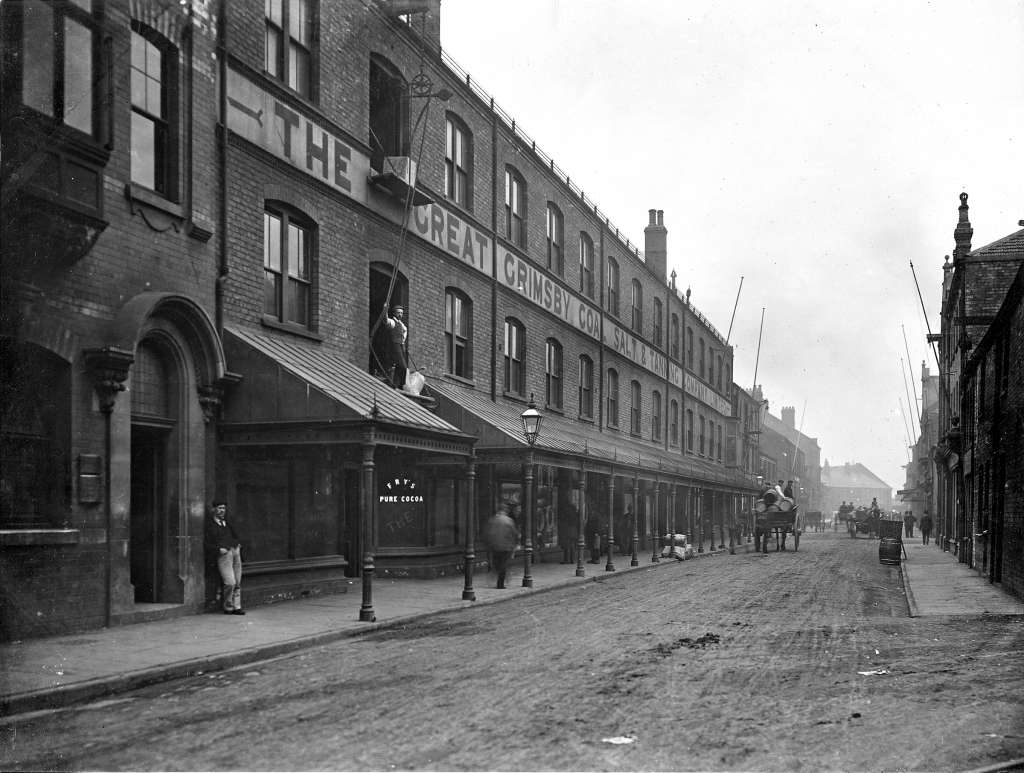Press release: Judge delays demolition for a week but rules against SAVE's Judicial Review regarding demolition plans for Grimsby’s historic docks
13 July 2016
Press release: Judge delays demolition for a week but rules against SAVE's Judicial Review regarding demolition plans for Grimsby’s historic docks. SAVE considers going to Court of Appeal
In a hearing that took place on 12 July 2016 at the Royal Courts of Justice in London, Mr Justice Ouseley heard SAVE’s claims put forward by John Steele QC of 39 Essex Chambers, regarding the proposed demolition of one side of a Victorian street on Fish Dock Road, in the heart of the historic Kasbah area of the Grimsby Docks.
At the hearing the Judge disagreed with our position that the decision-making process had been inadequate in the context of the Environmental Impact Assessment (EIA) screening direction. Mr Justice Ouseley did however order Associated British Ports (ABP) to undertake not to demolish the buildings for seven days to allow SAVE to consider options for an appeal.
Please help us cover our legal fees for this work. Visit our fundraising page - here
In May 2016 North East Lincolnshire Council granted consent to ABP who own the port and surrounding buildings, for the demolition of six Victorian buildings in the Grimsby docks, to be replaced with a storage area for wind turbines. There are two listed buildings opposite the site, and Fish Dock Road is the principal historic street in the port.
In their letter of objection to demolition to the Council, Historic England advised that, "the loss of the Cosalt buildings would have a significant harmful effect on the nearby designated heritage assets and the historic port of Grimsby as a whole. Their loss would seriously erode the surviving 'critical mass' of historic port buildings that currently allows the historic character and interrelationships within the port as a whole to be experienced and understood."
The Council had assessed that the demolition would not be likely to have a significant effect on the environment so no formal EIA would be required as the buildings to be demolished were unlisted and not in a Conservation Area. However SAVE argued that the Council failed to take into account the effect of the removal of a historic street on the setting of the surrounding listed buildings which include the Grade II* listed Grimsby Ice Factory, the Grade I listed Dock Tower, the Grade II listed Royal Docks and the listed buildings directly opposite the site. The Council also failed to deal with Historic England’s assessment that the demolition would have a significant environmental impact.
Despite unusually strong objection letters from Historic England, the government’s advisers on heritage matters, The World Monuments Fund, The Victorian Society, The Great Grimsby Ice Factory Trust and a petition to save the buildings signed by over 700 of people, the Council decided the demolition plans did not require the full scrutiny of a planning application through an EIA, and granted consent to demolish via a 28 day ‘prior approval to demolish’ consent.
Most alarmingly, in 2012, the Council commissioned a report by Atkins to assess the significance of the buildings and the wider area. The report notes:
“What sets The Kasbah apart… is not the architectural or evidential significance of individual buildings, but the rich collection of mutually dependent industries and building types which together cheek by jowl on a densely developed and tightly grained site, shaped by the landing, trading, processing, and transportation of an integrated fishing industry at the height of its powers. The small plots and the economic web of mutually dependent activities provide a valuable insight into the role of private enterprise within the wider 19th century fishing industry. It is the unity of density of use, the rich diversity of mutually dependent interrelated primary, secondary and tertiary industries, and the presence of unique building types which forms the site’s “Universal Value”.
The Cosalt headquarters buildings were identified in the report as important ‘landmark buildings’ with a ‘low capacity for change’.
However, following the application for demolition by ABP, the Council decided to put aside that advice and find that there was no significant affect on the environment and the setting of the listed buildings by demolishing one half of the street.
Henrietta Billings, Director of SAVE said: “We are obviously disappointed with the decision and are currently assessing our options for an appeal.
"This is a controversial demolition case that has generated national interest and strong objections from a wide range of heritage experts. The loss of these buildings for storage space and hard standing would be a massive blow for the wider historic significance of the Grimsby docks. If this Victorian street can be torn down, what is next in ABP’s sights? The Council must adopt a heritage led strategic approach to the Docks and ensure highly sensitive sites like this are recognised and protected. We will be keeping a close eye on further developments at the Docks.
Notes to Editors:
1. For more information and images, please contact Henrietta Billings, Director:Henrietta.billings@savebritainsheritag.org or Mike Fox, Deputy Director Mike.fox@savebritainsheritage.org 020 7253 3500
2. Grimsby was one of England’s foremost ports in the late 19th century and early 20thcentury and is recognized as one of the most important surviving examples of the industrial scale fishing trade in England.
3. The buildings to be demolished are referred to collectively as the Cosalt buildings. They form one whole side of Fish Dock Road, the principal street in the Kasbah. They consist of 6 buildings, all of which reflect the different character of uses at this location: warehouses, factories, shops, and offices.
4. SAVE is advised on this case by Susan Ring at Harrison Grant and John Steele QC.
5. In their letter of objection regarding the demolition application, Historic England stated: “We advise that demolition of the Cosalt buildings would:
- Harm the significance of the Ice Factory (grade II*), including through the loss of important views of the Ice Factory and Fish Dock Road together from within the enclosed street itself;
- Harm the significance of the Dock Tower (grade I), including through the loss of the Cosalt buildings in important views of the tower from Fish Dock Road;
- Severely harm the significance of the grade II listed buildings on Fish Dock Road itself, particularly through the loss of the whole of the other side of the street;
- Harm the significance of the other grade II listed buildings in the Kasbah.
- As heritage assets the Cosalt buildings are irreplaceable and the impact of their demolition would be irreversible.”
6. SAVE has a long standing interest in Grimsby Docks, and has been campaigning for their preservation and reuse for several years. In 2012 we worked with architect Graham Byfield to draw up an alternative vision for the site, showing how it could be revived and restored.
7. The World Monuments Fund included Grimsby Ice Factory and Kasbah in their 2014 Watch. Every two years the Watch draws international attention and support for some of the world’s most important and fragile cultural heritage. This nomination was accepted by WMF’s independent and international panel of experts because of the outstanding global significance of the site as a unique survivor of the Victorian industrial era.
8. SAVE Britain’s Heritage has been campaigning for historic buildings since its formation in 1975 by a group of architectural historians, writers, journalists and planners. It is a strong, independent voice in conservation, free to respond rapidly to emergencies and to speak out loud for the historic built environment.
9. Please help us cover our legal fees for this work. Visit our fundraising page - here
Press release issued by SAVE Britain’s Heritage
70 Cowcross Street, London EC1M 6EJ
Registered Charity 269129
Tel. 020 7253 3500 Email office@savebritainsheritage.org
Follow SAVE on Twitter: @SAVEBrit
Donate to SAVE via Justgiving


